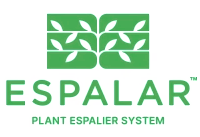The Benefits of Espalier
Espalier is more than a gardening technique — it’s a refined approach to growing that blends beauty with practicality. Whether you're working with a small courtyard or a long fence line, espalier offers a host of benefits that make it both functional and visually striking. From increasing productivity to elevating garden design, espalier is a powerful method that suits gardeners of all skill levels.
1. Space-Saving
One of the most celebrated benefits of espalier is its ability to make the most of limited space. By training plants to grow flat along a vertical surface, you eliminate the need for wide planting beds and bulky canopies. This makes espalier perfect for urban environments, apartment balconies, courtyard gardens, or any space where room is at a premium. You can grow productive fruit trees or ornamental climbers without sacrificing walkways, light, or air circulation.
In areas where every square metre matters, espalier allows you to cultivate vertically and turn otherwise unused walls or fences into lush, living features.
2. Visual Appeal
Espalier is often referred to as "living architecture." Its structured lines, clean geometry, and intentional design create a sense of visual order that complements both modern and traditional garden styles. Whether you're forming symmetrical tiers or diamond-shaped lattices, espalier adds elegance and interest to flat surfaces that might otherwise go unnoticed.
It’s an ideal choice for creating a focal point, softening a stark wall, or drawing the eye along a garden path. And because it evolves with the seasons, it offers year-round interest — from spring blossoms to lush summer foliage, autumn fruit, and even sculptural winter branches.
3. Increased Sunlight & Airflow
Because espaliered plants are spread across a single plane, each branch has better access to sunlight. This consistent exposure leads to more even ripening of fruit and stronger, healthier plant growth. In addition, the spacing between branches improves airflow, which is essential for preventing fungal diseases and reducing pest pressure.
This improved circulation and light penetration make it easier to maintain plant health naturally, without relying heavily on sprays or interventions. Especially for fruit trees, the benefits of improved air and light can lead to better flowering, better fruit set, and higher overall productivity.
4. Higher Yields in Fruit Trees
When trained correctly, espaliered fruit trees often produce higher and more consistent yields than their free-standing counterparts. Because each fruiting spur is exposed to optimal sunlight and can be individually cared for, the tree invests its energy more efficiently into fruit production.
In addition, harvesting becomes much easier — no ladders or awkward stretching. Every apple, pear, or fig is right within reach. This makes espalier not just a space-saver but a productivity enhancer, especially for backyard growers who want to maximize output from a small area.
5. Easier Maintenance
Espaliered plants are easier to prune, inspect, and harvest. Their growth is controlled and directed from the start, meaning you won’t deal with unruly branches, overgrowth, or hard-to-reach areas. Regular maintenance becomes intuitive: a light seasonal prune, occasional re-tying, and some guidance as new shoots develop.
For gardeners who want a clean, organised space — or who may not have time for high-maintenance landscaping — espalier offers a way to keep the garden tidy and efficient without constant upkeep.
6. Functional & Decorative
Espalier is as much a design element as it is a growing technique. It brings function to beauty and beauty to function. Use it to disguise an unattractive fence, to screen a neighbour’s window, or to create privacy between garden zones.
At the same time, the design itself becomes part of the experience. The interplay of structure and nature turns any espalier into a statement piece. Whether supporting a blooming jasmine or bearing a wall of apples, espalier provides a harmonious balance between hard surfaces and living forms.
7. Ideal for Training Variety
While espalier is most often associated with apples and pears, it's incredibly versatile. Many different plant types respond well to training — from citrus trees and stone fruits to flowering vines like clematis, bougainvillea, or passionfruit.
You can even use espalier techniques to grow vegetables vertically, such as tomatoes or beans on a post-mounted system. The diversity of plants that can be espaliered means that you can tailor the system to your needs — whether for food, fragrance, flowers, or simply visual delight.
Espalier is a rare gardening technique that checks every box: space efficiency, increased productivity, reduced maintenance, enhanced beauty, and design flexibility. It’s a method steeped in tradition yet perfectly suited to modern gardens. Whether you’re a first-time grower or an experienced landscape designer, the benefits of espalier are lasting, rewarding, and uniquely satisfying.
